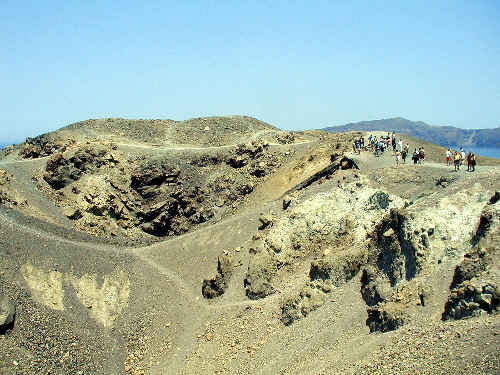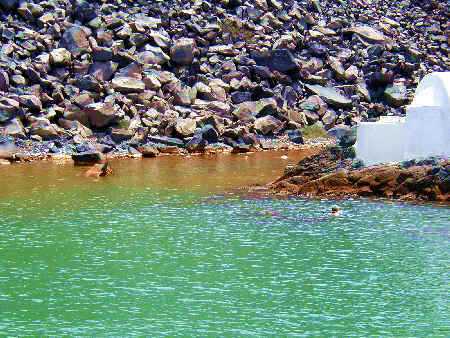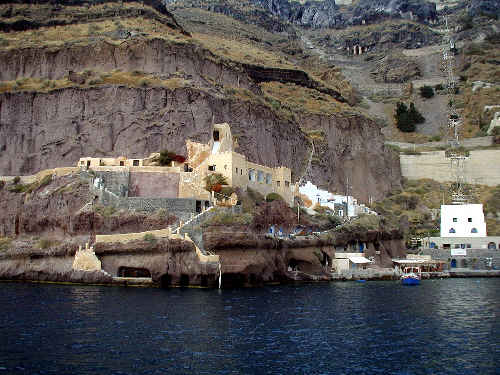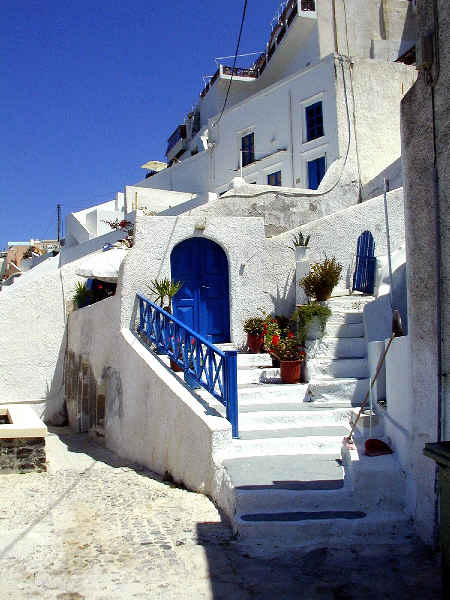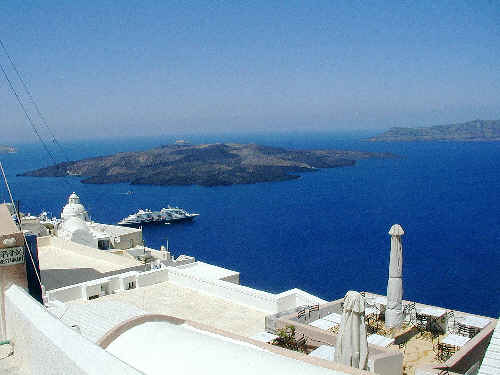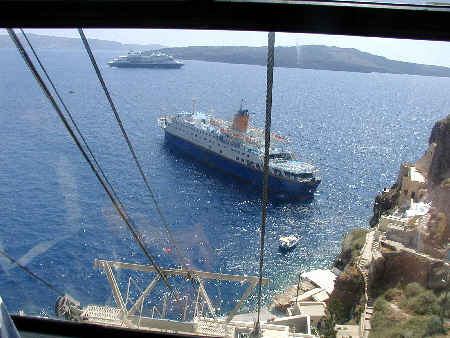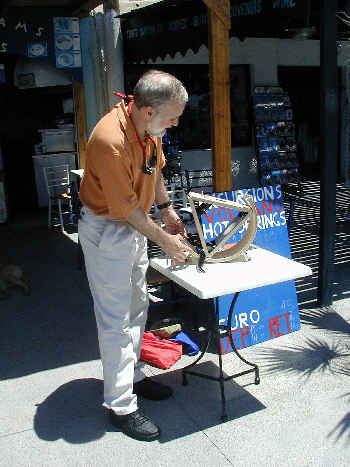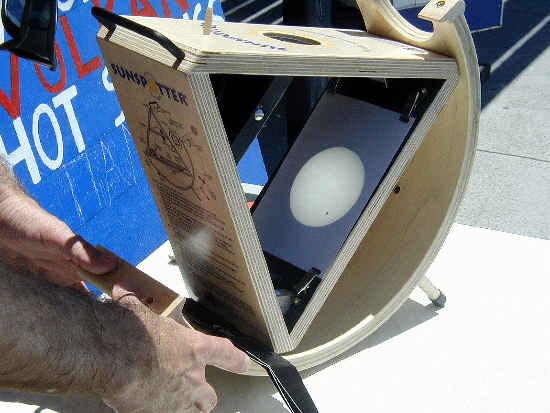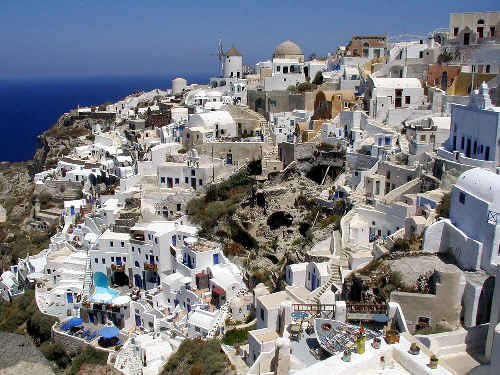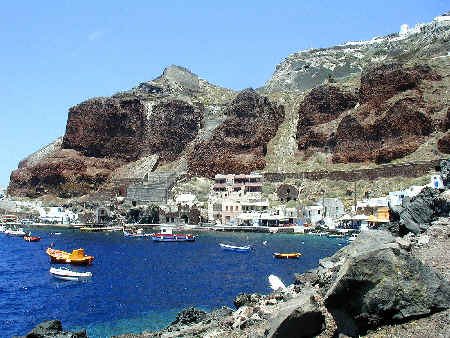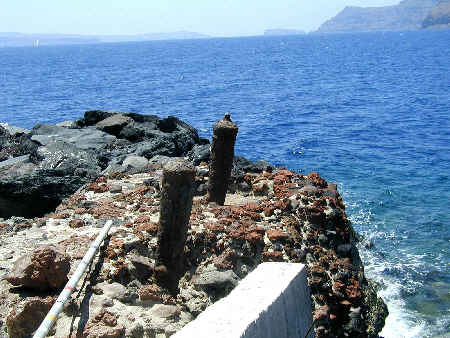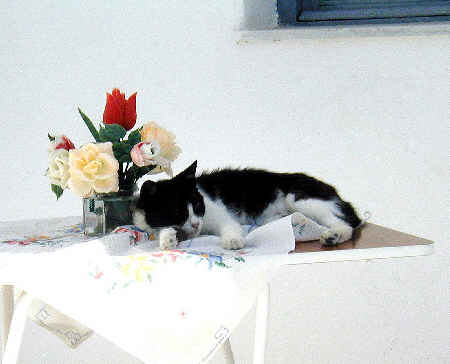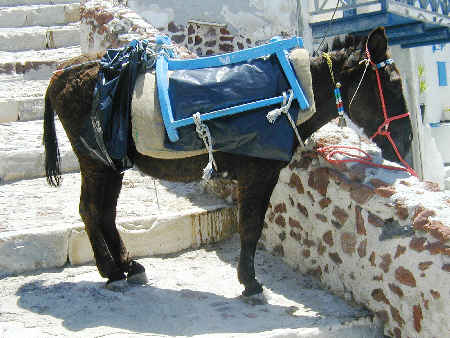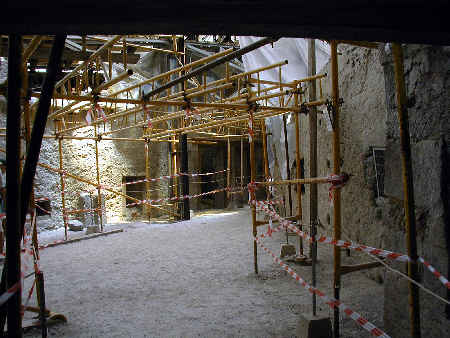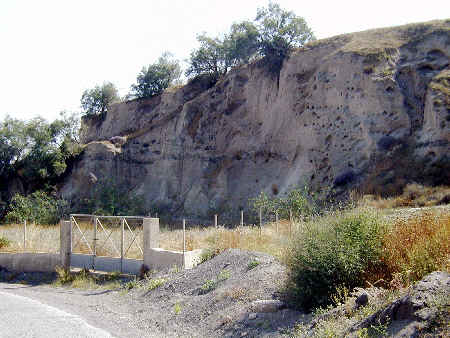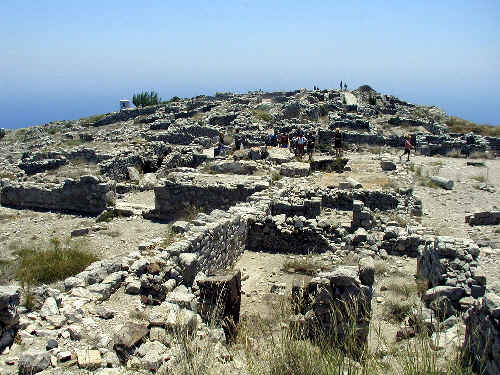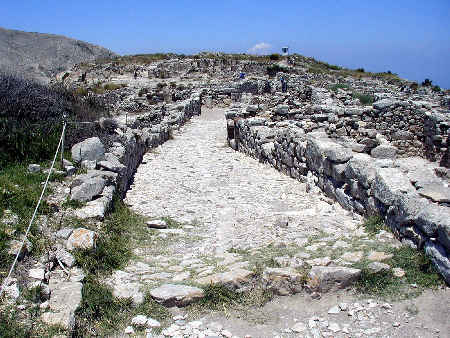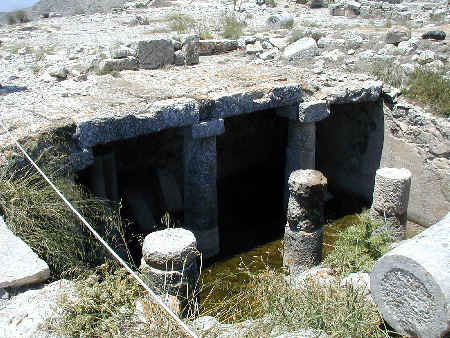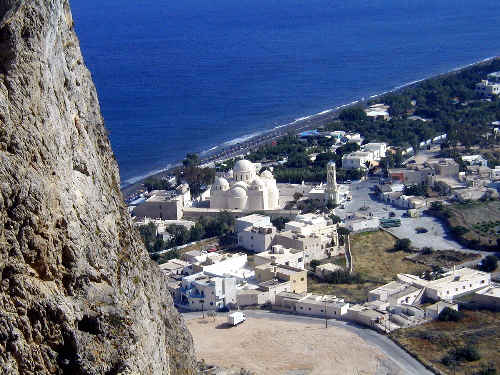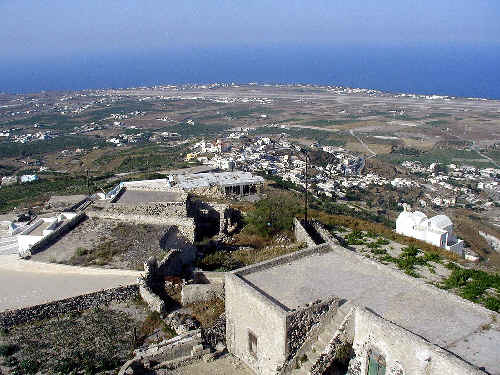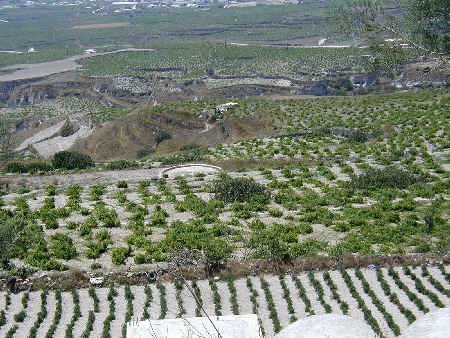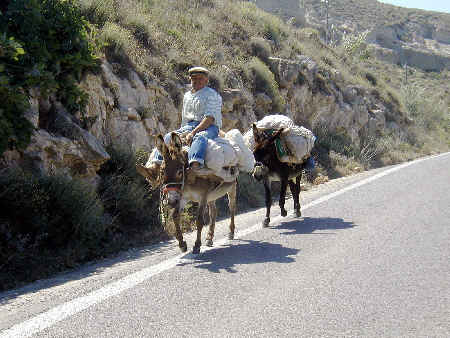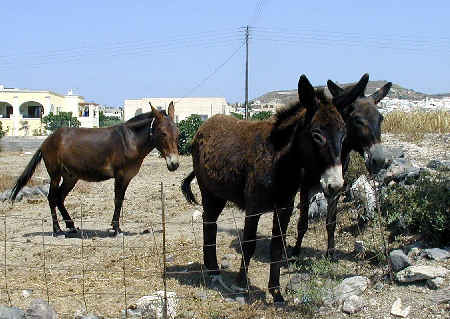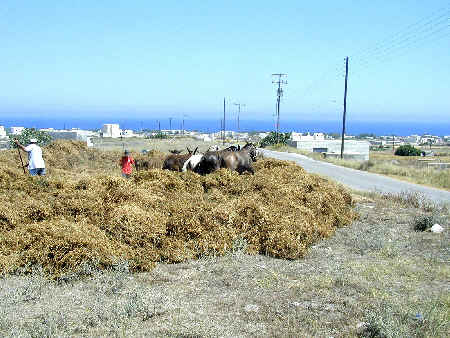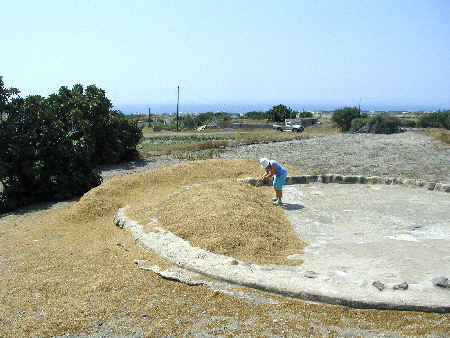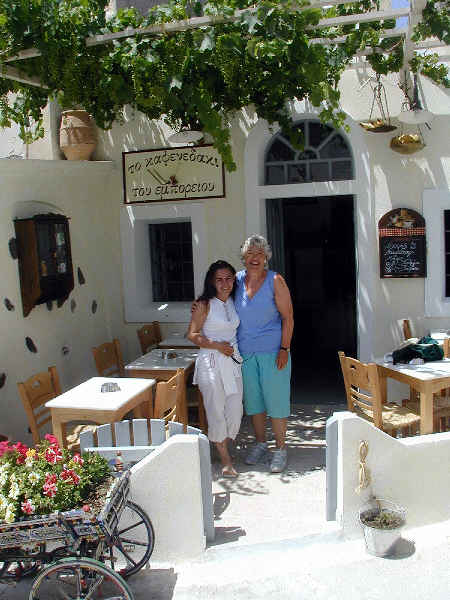|
I knew that June 8th was an important date for astronomers,
the first transit of Venus across the Sun for 122 years. I had planned
to set up my own crude experiment (using binoculars to project an image
on a card) later in the day, but it wasn't necessary.
On the Fira quayside we met Dan Benedict
of "Eye on the Sky", from New Jersey, USA. He had arranged a
Mediterranian cruise that would land in Santorini on the day. His viewer
is a lot better than mine would have been! We are grateful to Dan for
the chance to see this important event.
If you want to check the details (Scientific American May 2004) you
will find that the transit of Venus was first seen n 1639 by Jeremiah
Horrocks, who lived near where Kate and I spent our childhoods. His friend,
William Crabtree also saw it, near where we live now.
Dan Benedict runs a website www.astrocruises.com
which is well worth a visit.
|

